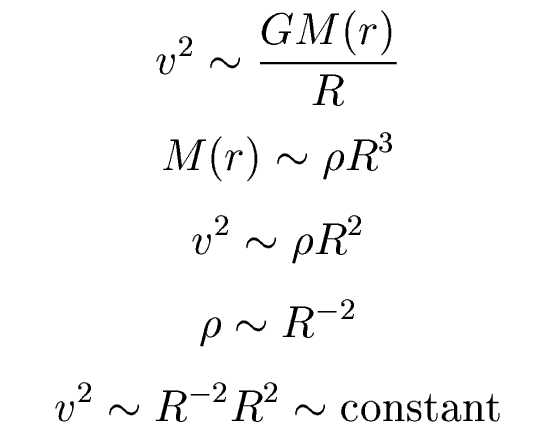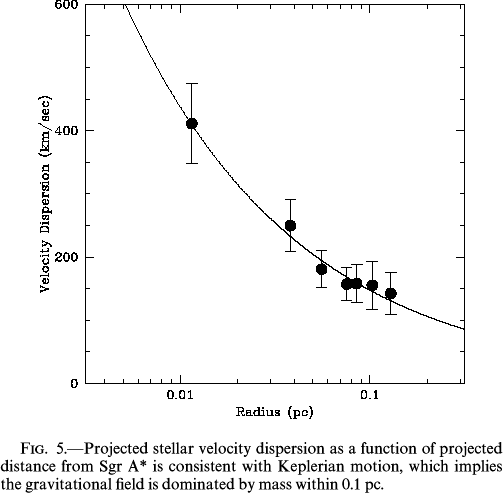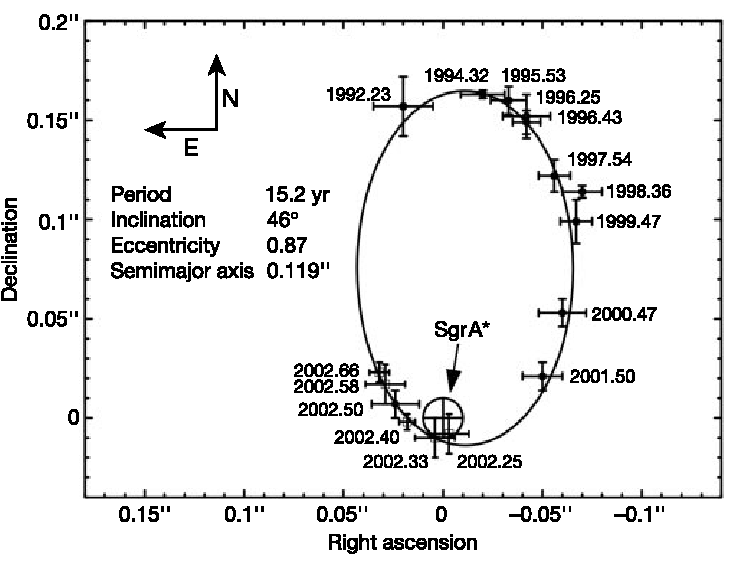
Sgr A* is also an X-ray source, with an X-ray luminosity of ~ 10 5 Lsun.

Using radio interferometry, we can study the structure of Sgr A* down to a few milliarcseconds. On these scales it is still unresolved, meaning that it must have a physical size of ~ 20 AU or less -- the size of the solar system!

But they do change. The stellar velocities rise rapidly in the inner few parsecs. What does this mean?
| Over the past 10 years, two
research groups (Ghez etal; Eckart etal) have
been studying the proper motion of
stars at the galactic center. To detect the transverse motion of stars
8 kiloparsecs away, some of these stars must be moving very
fast: ~ 1500 km/s!
The velocity dispersion of these stars show a Keplerian falloff (v~1/sqrt(r)) from r=0.01 pc to r=0.1 pc: This argues there is a lot of mass well inside a radius of 0.01 parsecs. |
 |
More recently, orbits were derived for
individual stars passing w/in a few hundred AU of the galactic center (Schodel etal 2002;
Ghez etal 2002).

How are these images possible? Laser
Guide Star Adaptive Optics.
More stars have been tracked since then (from the UCLA Galactic Center Group).
All this data is consistant with a massive object at
the galactic center
with a mass of (Ghez et al 2005):
And we don't "see" any of it.... What the
hell is this thing?